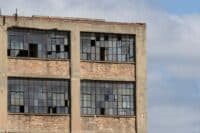
As promised two weeks ago, PG&E Corp. (NYSE: PCG) on Tuesday morning filed for bankruptcy protection in the federal District Court for Northern California. The company listed debts totaling $51.7 billion and assets valued at $71.4 billion. PG&E’s estimated liability for wildfires in 2017 and 2018 now exceeds $30 billion, and its estimated number of creditors ranges between 50,001 and 100,000.
While PG&E’s assets exceed its liabilities, the total liabilities listed in the filing do not include the $30 billion or more that may result from the past two years’ wildfires. Last week the California fire agency (Cal Fire) issued a statement exonerating the company from liability in the 2017 Tubbs Fire that killed 22 people.
Cal Fire’s decision may save the company as much as $11 billion in liability payments, but PG&E’s liability for other 2017 fires and the massive Camp Fire remain to be determined. The utility’s liability for those fires could rise to as much as $27 billion.
The giant utility that provides natural gas and electricity to 16 million customers has arranged $5.5 billion in debtor-in-possession financing from a consortium of banks including JPMorgan, Bank of America, Barclays, Citi, BNP Paribas, Credit Suisse, Goldman Sachs, MUFG Union Bank and Wells Fargo as lead arrangers. The company said it expects a timely decision on the financing package.
The anticipated filing sparked a backlash among some investors, the most vocal of which is BlueMountain Capital. The investment management firm has said it plans to propose a new slate of board members for PG&E by next month. In a statement Tuesday, the firm said, “Today’s filing is the latest example of how the board continues to fail the company, wildfire victims, customers, employees, creditors, shareholders and the people of California.”
PG&E had been hoping that the state would step in and at least pass legislation that would allow the company to issue state-backed bonds. That did not happen, and Governor Gavin Newson said earlier this month that a bankruptcy filing was PG&E’s decision, not the state’s.
Paul Singer’s Elliott Management led a group that offered a $4 billion convertible bond package to the utility to prevent the bankruptcy filing, and at least one other group that included Ken Griffin’s Citadel and Leon Black’s Apollo Global Management had offered a competing plan.
Now that PG&E’s board has chosen the bankruptcy route, the process could take years to come to a conclusion. If, as seems likely, the company’s equipment is found to be at least partially to blame for November’s Camp Fire, and if PG&E is found criminally liable as it was in a 2008 natural gas explosion in San Bruno that killed eight and wiped out an entire neighborhood, the end of this current chapter may be a decade away.
Travel Cards Are Getting Too Good To Ignore (sponsored)
Credit card companies are pulling out all the stops, with the issuers are offering insane travel rewards and perks.
We’re talking huge sign-up bonuses, points on every purchase, and benefits like lounge access, travel credits, and free hotel nights. For travelers, these rewards can add up to thousands of dollars in flights, upgrades, and luxury experiences every year.
It’s like getting paid to travel — and it’s available to qualified borrowers who know where to look.
We’ve rounded up some of the best travel credit cards on the market. Click here to see the list. Don’t miss these offers — they won’t be this good forever.
Thank you for reading! Have some feedback for us?
Contact the 24/7 Wall St. editorial team.

